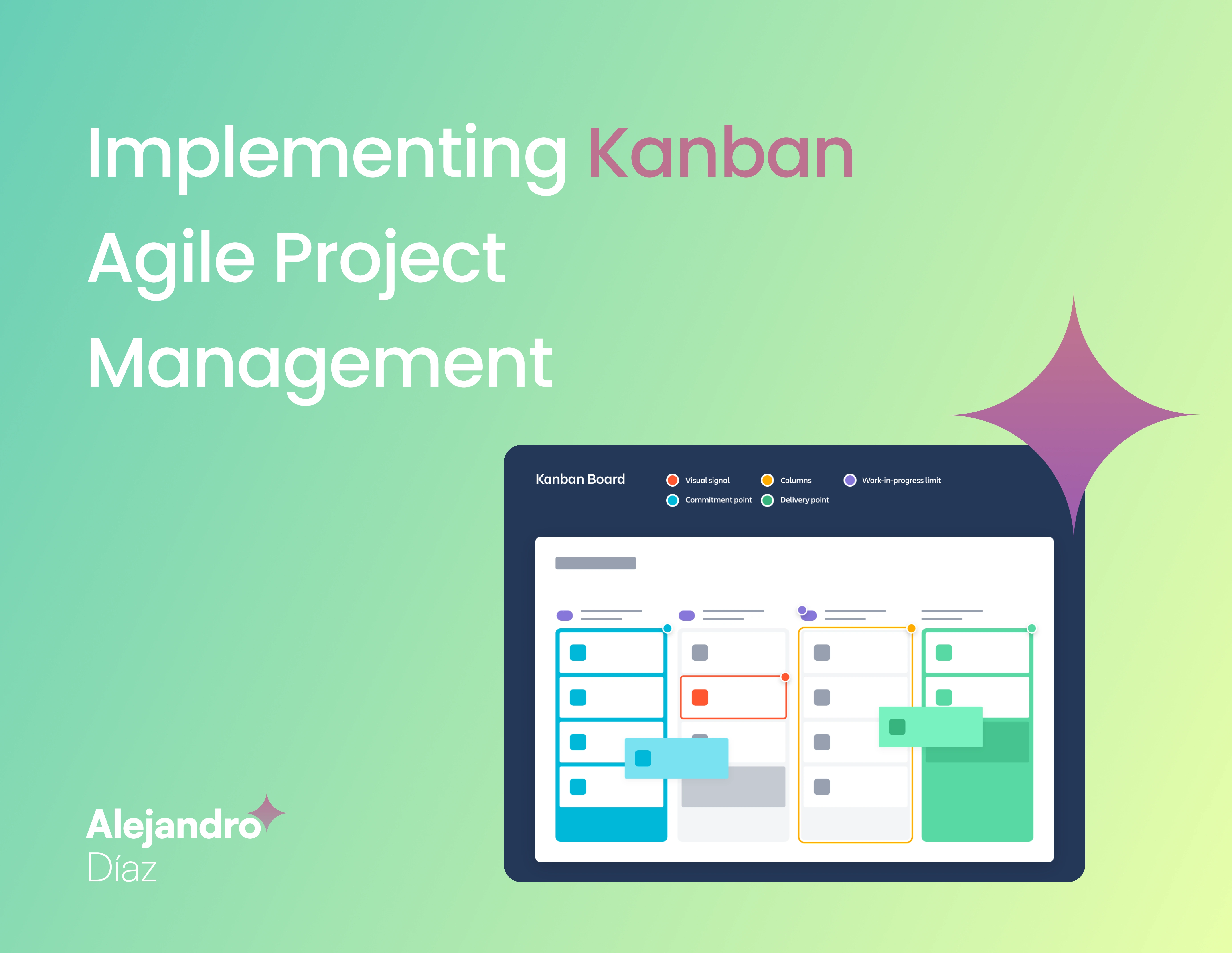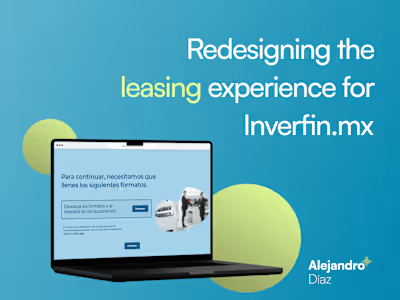Implementing Kanban Agile Project Management

Transforming Engineering Workflow: A Kanban Implementation Case Study at Class Valuation
Executive Summary
This case study details the successful implementation of the Kanban method within the Class Valuation engineering team to address significant challenges related to workflow visibility, efficiency, and collaboration. Faced with opaque processes, unpredictable delivery times, and siloed work habits, the team embarked on a journey to adopt Kanban principles. Key initiatives included collaborative workflow mapping, designing a visual task board with Work-in-Progress (WIP) limits, establishing regular flow-focused cadences, and fostering a culture of continuous improvement. The implementation resulted in substantial measurable improvements, including a 40% reduction in average feature lead time, a 25% increase in monthly throughput, and a significant rise in team satisfaction scores from 6/10 to 8.5/10. This report outlines the challenges, goals, implementation process, results, and key learnings, offering insights for teams considering similar Agile transformations.
The Starting Point: Challenges and Aspirations
Prior to the Kanban initiative, the Class Valuation engineering team, while technically proficient, faced operational hurdles common in rapidly evolving tech environments. These challenges hindered their ability to deliver value predictably and efficiently, impacting both internal morale and stakeholder confidence.
Defining the Challenges
The team's primary pain points could be categorized into three core areas:
Lack of Visibility: Work progression was often obscured. It was difficult to ascertain the exact status of tasks, identify where work was stalled, or understand the overall workload distribution across the team. For example, a critical feature requested by marketing might disappear into the development process with little indication of its progress or potential bottlenecks, leading to stakeholder frustration when delivery dates were missed. This lack of transparency made proactive problem-solving nearly impossible and contributed to a reactive, "firefighting" mode of operation.1 Hidden queues, particularly before code review and QA, silently accumulated work, delaying downstream processes without clear indicators until significant delays were already incurred.
Inefficient Workflows: Processes suffered from frequent context switching, unclear handoffs, and unpredictable delivery timelines. Without a clear understanding of system capacity or bottlenecks, work was often started without considering the downstream impact, leading to overloaded queues and delays. For instance, developers might complete coding tasks quickly but then face long waits for code reviews or QA availability, leaving valuable work sitting idle. This inefficiency not only delayed delivery but also contributed to developer frustration and wasted effort.1 The lack of explicit policies for handoffs often resulted in rework when downstream team members found requirements unclear or testing prerequisites unmet.
Limited Collaboration: Team members often worked in functional silos, focusing on their individual tasks with limited awareness of or participation in adjacent workflow stages. This could lead to situations where, for example, developers started new tasks while QA engineers were overwhelmed, or code reviews piled up because developers prioritized new coding over reviewing colleagues' work. A specific instance involved multiple developers pushing code to review simultaneously, creating a bottleneck that delayed several features, while other developers started new work, unaware of the downstream blockage. This siloed approach hampered overall system flow and prevented the team from effectively addressing bottlenecks as a collective unit.
Project Goals and Success Metrics
Recognizing these challenges, the team, facilitated by Agile coaching, established clear goals for the Kanban implementation initiative. These goals were designed to directly address the identified pain points and provide a framework for measuring success.
The primary goals were:
Improve Workflow Efficiency: Reduce the time it takes to deliver value from concept to deployment.
Enhance Visibility: Create transparency around the workflow, workload, and potential impediments.
Foster Collaboration: Encourage cross-functional teamwork and shared ownership of the workflow.
Increase Predictability: Improve the ability to forecast delivery timelines.
Boost Team Morale & Satisfaction: Create a more sustainable and less chaotic working environment.
To track progress towards these goals, specific, measurable, achievable, relevant, and time-bound (SMART) success metrics were defined.6 Explaining the rationale behind metric selection was crucial for team buy-in and ensuring focus on meaningful improvements. Lead Time was chosen to reflect the end-to-end customer value delivery time, while Cycle Time for specific stages (like Development) would help pinpoint internal bottlenecks. Throughput was selected to measure the overall system's capacity improvement, ensuring efficiency wasn't just perceived but resulted in more completed work. Finally, a Team Satisfaction Score was included to address the vital human element, acknowledging that process changes directly impact team well-being and sustainable performance.
The following table summarizes the key metrics, their estimated baselines, target values, and the timeframe for achieving them:
Table 1: Project Goals and Success Metrics
Role of the PM
I served as the project manager, an Agile Coach guiding the Class Valuation engineering team through the Kanban adoption process. Responsibilities included facilitating workshops, coaching the team on Kanban principles and practices, assisting with tool configuration, helping to define initial policies and metrics, and supporting the team's continuous improvement efforts.
The Transformation: Implementing Kanban at Class Valuation
The transition to Kanban was approached as a collaborative and evolutionary process, focusing on understanding the existing workflow and iteratively introducing Kanban principles and practices. The emphasis was not merely on implementing a tool, but on establishing a sustainable system for managing flow and driving continuous improvement.
4.1 Introduction and Buy-in
The journey began with introductory workshops focused on the core principles of Kanban: Visualize Work, Limit Work in Progress (WIP), Manage Flow, Make Policies Explicit, Implement Feedback Loops, and Improve Collaboratively, Evolve Experimentally (often associated with Kaizen). Kanban was selected as the appropriate method due to its flexibility in handling the team's mix of planned project work and unpredictable, interrupt-driven tasks (like urgent bug fixes). Unlike time-boxed iterations common in Scrum, Kanban's focus on flow efficiency and reducing lead time aligned well with the team's primary goal of improving delivery speed and predictability. Open discussions were facilitated to address initial questions and concerns, ensuring team members understood the rationale and felt involved in the decision.
4.2 Collaborative Workflow Mapping
A key initial step involved the entire engineering team participating in a collaborative workflow mapping session. Using a large whiteboard (later digitized), the team collectively traced the path work items took from initial request to final deployment. This exercise was crucial for building shared understanding and immediately surfaced previously hidden steps, handoffs, and potential waiting periods. The mapped stages included: Ideas/Needs > Backlog > Analysis/Design > Ready for Dev > Development (In Progress) > Code Review > Ready for QA > QA Testing (In Progress) > Ready for Deploy > Deployment > Done. This visualization made bottlenecks, like the queue before Code Review, apparent to everyone for the first time.
4.3 Designing and Implementing the Visual Task Board
Based on the mapped workflow, a digital Kanban board was configured using Jira. The columns directly mirrored the identified workflow stages.
Board Structure: The board provided a shared, real-time view of all active work items, their current status, and who was working on them. Card design was standardized to display essential information (e.g., task ID, title, assignee, type of work).
WIP Limits: Recognizing that limiting work in progress is fundamental to improving flow, the team collaboratively established initial WIP limits for the "in progress" columns.14 These limits were not arbitrary but based on the team's capacity at key stages. For example, with 5 developers, the Development (In Progress) WIP limit was set to 5, encouraging developers to finish work before starting new items. The Code Review limit was set lower at 3, acknowledging it as a known constraint and aiming to prevent excessive queuing. Similarly, QA Testing (In Progress) was given a WIP limit based on QA capacity. It was explicitly communicated that these were starting points – hypotheses to be tested and adjusted based on observation and retrospective discussions. This evolutionary approach to WIP limits is crucial for adapting the system to the team's actual capacity and flow dynamics.
Swimlanes: To handle urgent, unplanned work without disrupting the flow of planned features, an 'Expedite' or 'Fast Lane' swimlane was introduced across the board. This lane had its own strict WIP limit of 1, ensuring that only genuinely critical production issues could bypass the regular queues, maintaining focus while still allowing for rapid response when necessary.
[Visual Placeholder]: Figure 1: Screenshot of the initial Class Valuation Engineering Kanban Board in Jira, showing columns, WIP limits, card structure, and the Expedite swimlane.
4.4 Establishing Flow and Cadences (Feedback Loops)
Kanban relies on regular feedback loops to manage flow and drive improvement. The team established several key cadences:
Daily Stand-up: The format shifted from individual status updates ("What I did yesterday...") to a flow-focused discussion centered on the board. The team would "walk the board" from right to left (closest to 'Done' first), focusing on identifying and resolving blockers. Key questions became "What's blocking this item?" and "What needs to happen to move this forward?". This daily synchronization ensured impediments were surfaced and addressed rapidly.
Replenishment/Backlog Refinement Meeting: Held weekly, this meeting focused on pulling new work items from the Backlog into the Ready for Dev column. Crucially, items were only pulled if they met a collaboratively defined 'Definition of Ready' (DoR), ensuring that work entering the development process was well-understood and actionable. This meeting acted as a control point for managing the input queue and maintaining a steady flow.
Retrospectives: Conducted bi-weekly, these sessions were dedicated to inspecting and adapting the Kanban system itself.12 Using the visual board and flow metrics as inputs, the team discussed questions like: "Where is work consistently slowing down or piling up?", "Are our WIP limits effective?", "How can we improve our policies (DoR, Definition of Done)?", "What experiments can we try to improve flow?". These retrospectives embodied the principle of continuous improvement (Kaizen) and were the primary mechanism for evolving the system based on empirical evidence.
4.5 Fostering Collaboration
The structure of the Kanban system inherently encouraged collaboration.12
WIP Limits as Collaboration Drivers: When a column (e.g., Development (In Progress)) reached its WIP limit, team members who completed their current task couldn't simply pull new work. Instead, they were naturally incentivized to look downstream (e.g., help with Code Reviews) or upstream (e.g., assist QA) to clear bottlenecks and help existing work progress. This practice, often called "swarming," broke down silos and focused the team on collective throughput rather than individual busyness.
Explicit Policies: Defining clear 'Definition of Done' (DoD) criteria for each major handoff point (e.g., Dev to Code Review, Code Review to QA, QA to Deploy) reduced ambiguity and improved the quality of work moving between stages. Practices like pair programming were also encouraged for particularly complex or critical tasks to improve quality and share knowledge.
The implementation was treated not as a static endpoint but as the beginning of an ongoing journey of refinement. The initial board, WIP limits, and policies were viewed as testable hypotheses, continuously evaluated and adjusted through the established feedback loops, particularly the retrospectives. This evolutionary approach allowed the system to adapt to the team's specific context and changing needs over time.
Measurable Impact: Transforming Performance with Kanban
The implementation of Kanban yielded significant, measurable improvements across efficiency, visibility, collaboration, and team morale within six months. The results demonstrated the effectiveness of the system in addressing the initial challenges and achieving the project's stated goals.
Quantitative Results
Performance metrics showed marked positive changes compared to the pre-Kanban baselines:
Lead Time Reduction: Average lead time for delivering features, measured from 'Ready for Dev' to 'Deployment', decreased by 40%. It dropped from an estimated baseline of 25 days to an average of 15 days over the six-month period, exceeding the target of a 35% reduction. This directly addressed the goal of improving workflow efficiency and predictability.
Cycle Time Improvement: Analysis of cycle time within specific stages revealed significant gains. For example, the average cycle time for the Development (In Progress) stage decreased by 45%, indicating that once work was started, it moved through the active coding phase much faster due to reduced context switching and clearer requirements (enforced by the DoR).
Throughput Increase: The team's capacity for delivering completed work items increased substantially. Average monthly throughput rose by 25%, from approximately 20 work items per month to 25 items per month, surpassing the 20% target. This demonstrated that the efficiency gains translated into higher overall output.
Work Item Age & Predictability: Tracking the age of work items on the board showed a significant reduction in long-stalled tasks. Before Kanban, some items could languish for weeks; post-implementation, 90% of work items were completed within 20 days of entering the 'Ready for Dev' state. This improvement in flow consistency greatly enhanced predictability.
Qualitative Results
Beyond the numbers, the qualitative impact on the team's daily experience and stakeholder interactions was profound:
Improved Visibility & Reduced Chaos: The visual nature of the Kanban board brought immediate clarity. A Team Lead commented: "Before Kanban, it felt like we were constantly fighting fires and reacting to urgent requests without a clear view of everything else. Now, the board gives us a transparent picture of all work in progress. We spot potential bottlenecks much earlier and can actually manage our flow proactively." This directly addressed the initial challenge of poor visibility.
Enhanced Collaboration & Flow: WIP limits proved transformative in changing team behavior. A Developer shared: "The WIP limits initially felt restrictive, like they might slow us down. But they actually forced us to help each other out. When development hits the limit, we look at code reviews or help QA. Swarming on blocked items gets things moving way faster than everyone just staying in their own silo and starting something new." This highlights the shift towards collective ownership and addressing the collaboration challenge.
Increased Predictability & Stakeholder Satisfaction: The improved flow and reduced lead time variation had a positive impact on external perceptions. A Product Manager noted: "The predictability has been a game-changer. Because the flow is smoother and lead times are more consistent, we can give stakeholders much more reliable estimates for feature delivery. This has rebuilt a lot of trust that was previously strained by missed deadlines." This outcome relates directly to the goals of increased predictability and improved workflow efficiency.
Team Morale: The move towards a more organized, predictable, and collaborative environment significantly boosted team morale. Quarterly team satisfaction surveys, using a simple 1-10 scale similar to CSAT principles 10, reflected this positive shift. The average score rose from 6/10 pre-Kanban to 8.5/10 six months post-implementation, achieving the target set for this crucial attitudinal metric.
The quantitative improvements, such as the 40% lead time reduction, directly underpinned the qualitative feedback. Faster delivery cycles (quantitative) translated into reduced team stress and increased stakeholder confidence (qualitative).5 The increased throughput (quantitative) supported the Product Manager's perception of enhanced predictability (qualitative). This synergy between objective data and subjective experience painted a holistic picture of the transformation's success.
While isolating the direct impact on revenue is complex 8, the observed improvements carry significant business implications. Delivering features 40% faster allows Class Valuation to respond more rapidly to market changes and customer needs, potentially creating a competitive advantage.22 Furthermore, the enhanced predictability and smoother delivery likely reduce friction with internal business stakeholders and improve overall planning capabilities.
Summary of Results
The following table provides a concise overview of the achieved results against the initial project goals and metrics:
Journey Reflections: Learnings and Continuous Improvement
The Kanban implementation journey at Class Valuation provided valuable lessons, not just in process mechanics but also in managing change and fostering an Agile mindset. Reflecting on this experience highlights key takeaways, challenges overcome, and opportunities for future enhancement.
Key Learnings
Several core principles proved particularly impactful:
The Power of Visualization: Simply making all work items and their flow visible on the Kanban board was transformative. It created a shared understanding, exposed hidden queues and dependencies instantly, and provided the foundation for all subsequent improvements. What was previously managed through disparate tools or individual awareness became a collective, transparent reality.
WIP Limits Drive Behavioral Change: Limiting Work in Progress was arguably the most potent mechanism for altering team dynamics. It fundamentally shifted the focus from starting work to finishing work. This constraint naturally encouraged collaboration, swarming on bottlenecks, and prioritizing the smooth flow of value through the entire system, rather than optimizing individual "busyness."
Cadences Maintain Momentum: The regular feedback loops provided by the daily stand-ups (for impediment management) and retrospectives (for system improvement) were essential.13 They provided the discipline needed to maintain focus on flow, address issues promptly, and ensure the Kanban system itself evolved based on the team's experience. Attempts to shorten or skip these cadences invariably led to a noticeable decrease in flow awareness and problem-solving effectiveness.
Explicitness Reduces Friction: Making policies explicit, particularly the 'Definition of Ready' (DoR) and 'Definition of Done' (DoD) for key workflow stages, significantly reduced ambiguity, misunderstandings, and rework during handoffs. Clear criteria ensured work entered stages prepared and left stages truly complete.
Challenges Encountered & Overcoming Them
The transition was not without its hurdles. Framing these challenges as learning opportunities was crucial for maintaining momentum and fostering resilience:
Initial Resistance to WIP Limits: As anticipated, some team members initially perceived WIP limits as artificial constraints that might lead to idleness or slow down individual productivity. Overcoming this required consistent coaching that emphasized optimizing system throughput over individual utilization. Demonstrating the positive impact on lead time and reduced chaos during retrospectives, using the team's own data, was key to gradually building understanding and buy-in.
Setting Initial WIP Limits: Determining the "correct" starting WIP limits was a significant challenge, as there's no universal formula. The team learned the importance of starting with reasonable estimates (based on team size and known constraints) and treating these limits as hypotheses to be tested. The retrospective cadence provided the forum to analyze flow data (e.g., where work was piling up) and make iterative adjustments to the limits until a smoother flow was observed.
Defining 'Done' Collaboratively: Reaching a consensus on a comprehensive 'Definition of Done' that satisfied Development, QA, and Operations perspectives required dedicated facilitation and negotiation over several sessions. While challenging, establishing these shared quality standards proved indispensable for achieving smoother deployments and reducing late-stage issues.
Tool Adaptation: Configuring Jira to accurately reflect the desired Kanban flow, visualize WIP limits effectively, and capture relevant flow metrics required some initial experimentation and learning curve for the team administrators.
Next Steps for Continuous Improvement
The successful implementation is viewed not as an endpoint, but as a foundation for ongoing improvement, embodying the Kaizen spirit central to Kanban and Agile methodologies. Potential next steps identified by the team include:
Refining Metrics & Visualization: Exploring the use of Cumulative Flow Diagrams (CFDs) to gain deeper, visual insights into workflow stability, identify patterns in lead time variation, and better understand queue sizes over time.
Optimizing WIP Limits: Continuously analyzing flow metrics (lead time distribution, cycle time, throughput variability) to further fine-tune WIP limits, potentially adjusting them based on specific types of work or team capacity fluctuations.
Exploring Classes of Service: Considering the introduction of Classes of Service (e.g., Standard, Expedite, Fixed Date, Intangible) to manage different work item priorities and risk profiles more explicitly within the Kanban system, potentially improving stakeholder alignment on prioritization.
Expanding Kanban Thinking: Investigating opportunities to apply Kanban principles and visualization techniques to upstream processes (like product discovery and requirements definition) or downstream activities (like operational support) to improve the end-to-end value stream flow across different functions.
Conclusion
The adoption of Kanban transformed the Class Valuation engineering team's workflow, moving them from a state of low visibility and unpredictable delivery to one characterized by transparency, improved efficiency, and enhanced collaboration. By visualizing their work, limiting work in progress, managing flow actively, and committing to continuous improvement through regular feedback loops, the team achieved significant reductions in lead time, increased throughput, and boosted overall satisfaction. The journey highlighted the importance of collaborative implementation, the power of WIP limits in driving behavioral change, and the necessity of treating process improvement as an ongoing, evolutionary endeavor. The measurable results and positive qualitative feedback validate Kanban as an effective method for optimizing engineering workflows and delivering greater value more predictably. The learnings from this initiative provide a strong foundation for further refinement and the potential expansion of these principles within Class Valuation.
Like this project
Posted Jun 30, 2023
Implemented Kanban Agile Project Management at Class Valuation's engineering team, enhancing workflows, collaboration, and efficiency.
Likes
1
Views
86
Timeline
Feb 1, 2022 - Dec 1, 2023
Clients

Class Valuation





